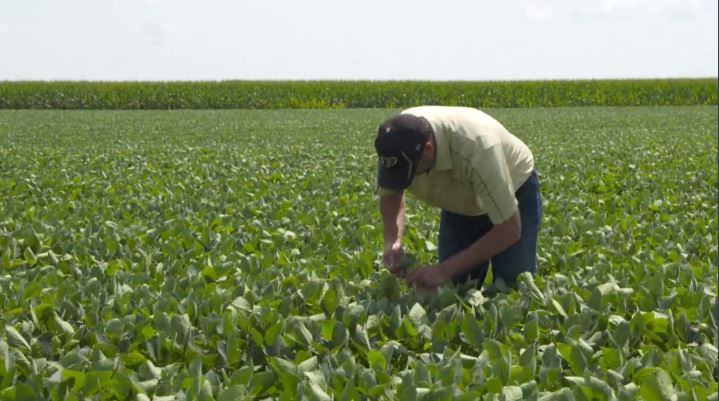Take Back Control of Record Fertilizer Costs with Biologicals
If there has ever been a year for farmers to consider using biologicals to unlock the fertility that already exists in their soil, it is 2022.
Fertilizer prices, especially anhydrous ammonia, are setting new weekly records. We’re all feeling the pinch — like many of our customers, nitrogen prices have been so volatile, it’s difficult for anyone to confirm a price.
This puts growers and their ag retailers in an undeniably stressful situation. Some farmers are betting next year’s grain prices stay strong enough to offset the highest fertilizer costs they’ve seen in years. Others are being conservative, reducing their nitrogen applications to a bare minimum and crossing their fingers it won’t affect next year’s yields. Ag retailers are hoping they are steering their customers in the right direction and worrying whether the global shortages will leave them scrambling to fill prescriptions.
But neither farmers nor retailers have a crystal ball of the future and no way to influence factors outside their control, like a global shortage of fertilizer. Yet farmers do have something well within their control — their farm’s natural, biological soil fertility.
Improving soil fertility is exactly where biologicals, specifically biofertilizers, are key, even more so in a year like this one. The addition of a complete biofertilizer is an affordable way farmers can make the most out of the nutrients already in their soil — or optimize what they can afford to apply — even in the first year of application.
When plant biofertilizer are used in combination with reduced nitrogen fertilizer, this approach has the potential to improve the nitrogen use efficiency of production systems, as summarized in Biostimulants as a Safeguard to Plants Against Poor Nitrogen Supply, a report by Purdue University Department of Horticulture.
In DPH Biologicals’ grower trials, farmers have reduced their starter fertilizer usage by up to 50% when they used our complete biofertilizers in-furrow with their starter.
How Do Biologicals Reduce and Optimize Fertilizer Use?
Biofertilizers are a group of natural substances and microbial inoculants that contribute to soil fertility, like humus, seaweed, algae extract, and plant growth-promoting rhizobacteria (PGPR).
They work best together, creating a welcoming environment to stimulate natural microbial populations and create a robust, biologically active rhizosphere where plants can efficiently find and uptake the nutrients available to them, equating to less fertilizer needed.
Biofertilizers supercharge the microbial life within the rhizosphere, encouraging root growth and nutrient uptake in a more multi-faced and resilient way than a traditional fertilizer application does.
The quality of soil aggregate improves with humus, allowing a more robust root system to establish quickly. Then the PGPR’s get to work. Aggressive root colonizers, PGPR’s help develop strong root systems and solubilize mineral nutrients in the soil, like phosphorus and potassium, making them more readily available for plant nutrient uptake. Meanwhile, a carbon source, like algae, act as green manure below ground, fostering an environment for the microbials to flourish and colonize.
Though each component of the rhizosphere is important, when using biologicals, the key isn’t just one specific bacteria, nutrient or extract, it’s the combination, said Mike Orzolek, Ph.D., Emeritus Plant Scientist at Penn State University and agronomy consultant for DPH Biologicals.
“The key to increasing the total microbial population of soil is not just adding one particular species. Multiples are much better than a single species because together they create a holistic and healthy growing environment,” Orzolek said. And with that increased microbial population, growers can scale back their fertilizer use without detrimental effects on crop quality or yield.
Why Aren’t We Already Using Biologicals?
Biologicals have been around a lot longer than many farmers and agronomists realize.
Some of the first research started in 1933 in the USSR. Researchers began studying “organic acids with stimulating effects due to their dibasic properties which can enhance the enzymatic activity in plants,” according to a 2017 study published in Frontiers in Plant Science. Indeed, DPH Biologicals, formally Douglas Plant Health, has been refining our biofertilizer products in farmers’ fields for decades and across millions of acres.
While the biologicals market is currently working hard to provide proof of its promise, in reality biologicals have not yet seen wide use in conventional broadacre farming largely due to the lack of understanding and inconsistent performance of biological products, combined with easy access to cost-effective synthetic fertilizers. But those realities are changing.
In the past, nitrogen and phosphorus fertilizer use has gone largely unregulated. That is no longer the case for many farmers due to increased scrutiny on a state-by-state and regional basis. Due to increased environmental issues, CPG brands, like Kellogg and Anheuser-Busch, have been pledging to improve sustainability of their supply chains, including reducing fertilizer use.
Taken together, high costs, possible regulatory actions and supply chain pressures are expanding the scrutiny of crop fertility practices. With improved biological technologies, farmers and ag retailers have expanded options.
Biologicals for More Efficient Use of Fertilizers
Before GMO technology, soybeans growers would routinely overplant, with the understanding that a portion of plant population would likely die. Seed was cheap. But that mentality changed when biotechnology increased seed costs and seed treatments improved confidence to dial in planting rates. Innovation enabled the farmer and ag retailers to change their farming practices to improve profitability and productivity.
What we’re seeing with fertilizer is simply the same shift toward better farming efficiencies. And just like farmers learned to make every seed count with seed treatments, they can maximize their soil fertility using complete biofertilizer applications.
For those growers going into 2022 already planning to cut their historical fertilizer usage, this is the perfect time to explore biologicals to maintain their productivity. For those growers planning to keep up their historical nitrogen levels, experimenting with biofertilizers can help them see incremental benefits and optimize future fertilizer applications.
There is, after all, no guarantee what 2023, or beyond, will bring when it comes to fertilizer costs, crop prices or some other calamity farmers can’t predict or control. But investing in your farm’s soil health bank? That’s an asset every farmer can depend upon.






